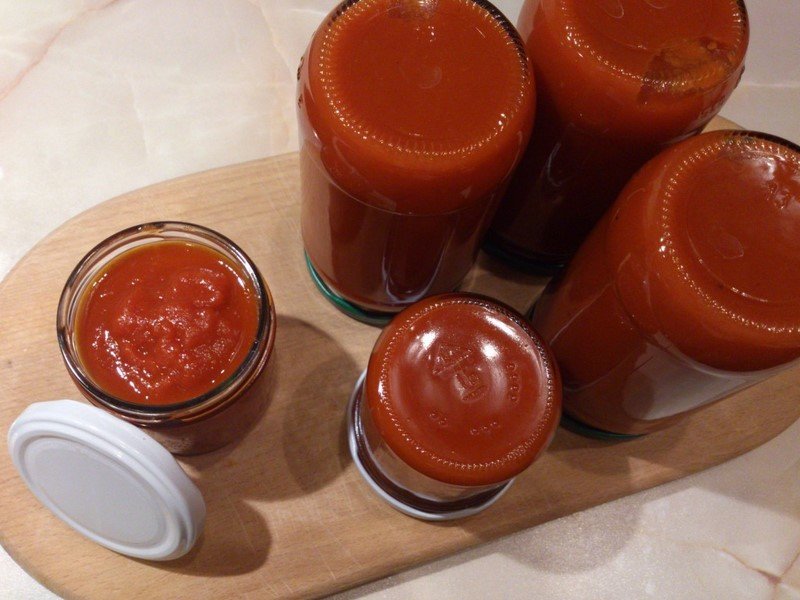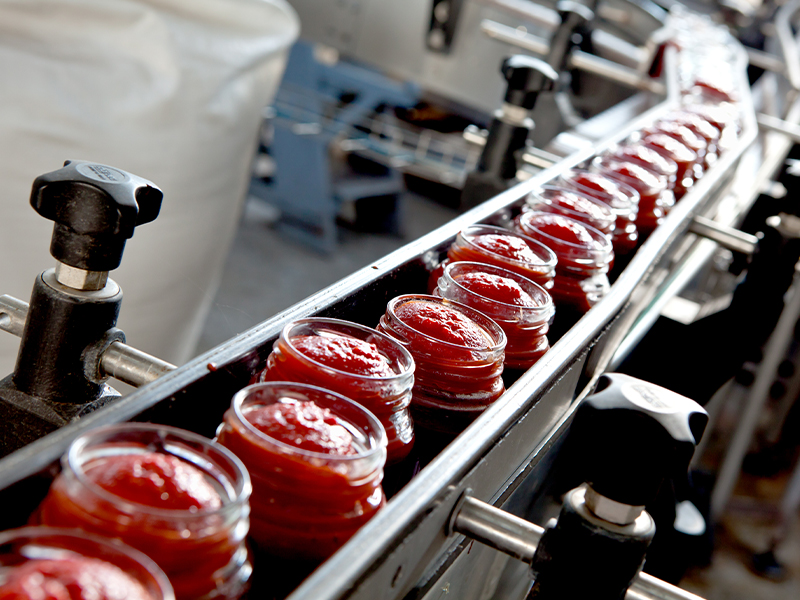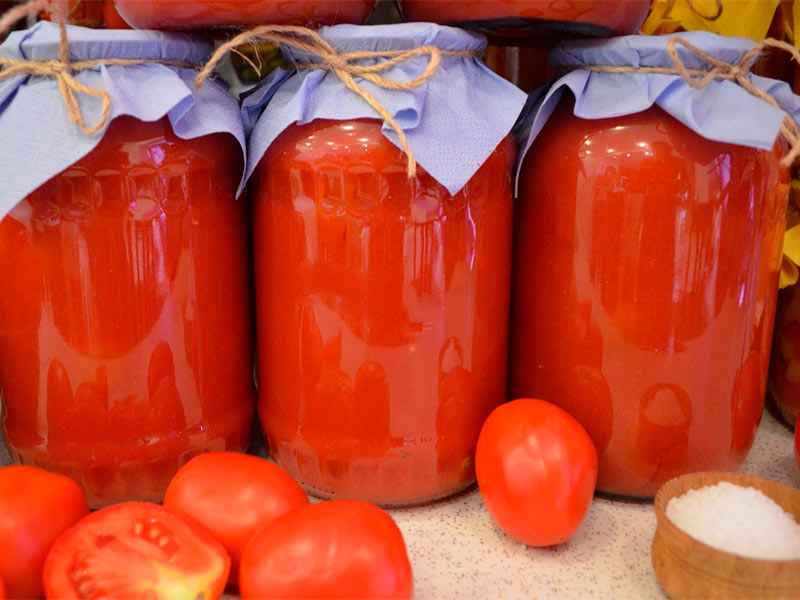Pasta sauce is a popular and versatile ingredient that adds flavor, richness, and texture to a variety of pasta dishes. While there are numerous types of pasta sauces available in the market, one option that stands out is tomato paste-based sauce. Tomato paste, a concentrated form of tomatoes, is a key ingredient in many pasta sauces due to its thick texture, intense flavor, and versatility. In this article, we will explore the use of tomato paste as a base for pasta sauce, its advantages, and tips for making a delicious tomato paste pasta sauce.
Tomato paste is made by cooking tomatoes for an extended period to remove excess water, resulting in a concentrated tomato puree. This process intensifies the flavors of the tomatoes and creates a thick, smooth consistency. As a base for pasta sauce, tomato paste offers a robust and rich flavor profile, making it a popular choice for those seeking a traditional and authentic Italian taste.
One of the significant advantages of using tomato paste as the primary ingredient in pasta sauce is its convenience. Tomato paste can be easily stored, requiring no refrigeration until opened, making it a kitchen staple for many households. Its long shelf life allows for easy availability and quick preparation of a pasta sauce whenever needed.
Additionally, tomato paste offers versatility in terms of customization. While it can be used on its own as a simple and pure tomato sauce, it also serves as an excellent base for adding various herbs, spices, vegetables, and meats to create a more complex and flavorful pasta sauce. Adding ingredients like garlic, onions, basil, oregano, and red pepper flakes can enhance the taste and aroma of the sauce, taking it to the next level.
To make a basic tomato paste pasta sauce, one needs to dilute the tomato paste with water or stock to achieve the desired consistency. The proportion of tomato paste to liquid can be adjusted to cater to personal preferences. Cooking the sauce over low heat allows the flavors to develop, resulting in a well-balanced and delicious sauce. Adding salt, pepper, and sugar to taste helps to balance the acidity of the tomatoes and bring out their natural sweetness.
When making a tomato paste pasta sauce, there are a few tips that can help elevate the flavor and texture of the dish. Firstly, sautéing the tomato paste with garlic and onions in olive oil before adding the liquid enhances the overall taste of the sauce. This step helps to release the flavors and aromas of the ingredients, leading to a more complex and savory sauce.
Another essential tip is to cook the sauce for a longer duration over low heat. This allows the flavors to meld together and intensifies the richness and depth of the sauce. Simmering the sauce for at least 30 minutes to an hour allows the ingredients to break down, resulting in a smoother and silkier texture.
Adding herbs and spices is crucial to creating a well-rounded tomato paste pasta sauce. Basil, oregano, parsley, and thyme are popular choices that complement the tomato flavor and add a fresh and aromatic element to the sauce. Red pepper flakes can be added to provide a hint of spice, while a pinch of sugar can help balance the acidity of the tomatoes and enhance their natural sweetness.

In terms of pairing, tomato paste pasta sauce goes well with various pasta shapes and dishes. Classic pasta shapes such as spaghetti, penne, and fettuccine are commonly used, but the sauce can also be paired with filled pastas like ravioli and tortellini. Tomato paste pasta sauce is versatile enough to be used for traditional pasta dishes like spaghetti bolognese and lasagna, but it can also be used as a base for creative recipes like tomato cream sauce, vodka sauce, or puttanesca sauce.
While tomato paste-based pasta sauce is a delicious and convenient option, it is worth noting that it may not have the same complexity and depth as sauces made from fresh tomatoes. The concentrated nature of tomato paste can sometimes result in a slightly overpowering tomato flavor. However, this can be easily balanced with the addition of other ingredients and spices.
In conclusion, tomato paste serves as an excellent base for pasta sauce due to its intense flavor, thick texture, and versatility. It offers convenience and long shelf life while providing the ability to customize the sauce to personal preferences. With the right combination of ingredients and cooking techniques, tomato paste pasta sauce can add depth and richness to a variety of pasta dishes. Whether enjoyed with classic pasta shapes or used as a base for creative recipes, tomato paste pasta sauce is a flavorful and satisfying option for pasta lovers.Title: The Business of Tomato Paste Pasta Sauce: Advantages, Market Analysis, and Profit Potential
Introduction:
Tomato paste pasta sauce has gained popularity as a convenient and versatile option for pasta lovers. In this article, we will delve into the business aspects of tomato paste pasta sauce, discussing its advantages, conducting a market analysis, and exploring the profit potential for entrepreneurs in this industry.
I. Advantages of Tomato Paste Pasta Sauce:
Tomato paste pasta sauce offers several advantages that make it an attractive option for consumers and entrepreneurs alike.
1. Convenience and Shelf Life:
One of the key advantages of tomato paste-based pasta sauce is its convenience. Tomato paste has a long shelf life and can be easily stored, allowing for easy availability and quick preparation of pasta sauce whenever needed. This convenience factor appeals to busy individuals and households, making it a sought-after product.
2. Intense Flavor Profile:

Tomato paste provides a concentrated and robust flavor profile, resulting in a rich and satisfying pasta sauce. The tomatoes undergo a cooking process that intensifies their flavors, providing a more authentic and traditional taste compared to other tomato products. This flavor advantage gives tomato paste pasta sauce an edge in the market.
3. Customization Potential:
Another advantage of using tomato paste as a base for pasta sauce is its versatility in customization. Entrepreneurs can add their own blend of ingredients, herbs, and spices to create unique and flavorful pasta sauce varieties. This ability to customize allows businesses to cater to diverse consumer preferences, increasing their market potential.
II. Market Analysis for Tomato Paste Pasta Sauce:
To understand the business potential of tomato paste pasta sauce, it is essential to conduct a market analysis. This analysis helps entrepreneurs identify the target market, competition, and consumer trends.
1. Target Market:
The target market for tomato paste pasta sauce includes pasta lovers, households, and individuals looking for convenient and flavorful meal options. This market segment appreciates the convenience factor and the ability to customize the sauce to their liking. Additionally, health-conscious consumers seeking all-natural and preservative-free options are also an emerging segment to consider.
2. Competition:
While there are various pasta sauce options available in the market, the competition specific to tomato paste pasta sauce comes from other tomato-based pasta sauces. This includes both commercially produced sauces and homemade alternatives. Differentiating the product through unique flavors, innovative packaging, and marketing strategies will be crucial to gaining a competitive edge.
3. Consumer Trends:

Consumer trends such as the increasing demand for convenience, healthy and all-natural products, and the rise of home-cooking have created a favorable environment for tomato paste pasta sauce. Additionally, the growing interest in ethnic flavors and global cuisines presents an opportunity for entrepreneurs to introduce fusion sauces or capitalize on traditional Italian recipes.
III. Profit Potential:
1. Product Line Expansion:
Entrepreneurs in the tomato paste pasta sauce business can explore product line expansion to increase their profit potential. This includes offering a range of flavors, such as garlic and herb, spicy arrabbiata, roasted vegetable, and mushroom variations. Catering to dietary preferences, such as gluten-free and vegan options, can also attract a wider customer base.
2. Distribution Channels:
Choosing the right distribution channels is crucial for reaching the target market effectively. Entrepreneurs can consider selling their tomato paste pasta sauce in grocery stores, specialty food stores, online platforms, and even partnering with local restaurants or pasta shops. Local farmers’ markets and food festivals can also provide an excellent platform for direct-to-consumer sales and building brand awareness.
3. Packaging and Branding:
Investing in attractive and informative packaging helps to catch the consumer’s attention and communicate the unique selling points of the product. Clear labeling, highlighting the natural and quality aspects of the tomato paste used, can also create a sense of trust and appeal to health-conscious consumers. Additionally, building a strong brand presence through effective marketing strategies, social media campaigns, and collaborations can contribute to long-term profitability.
4. Cost Analysis:
To ensure profitability, entrepreneurs must conduct a cost analysis of their tomato paste pasta sauce business. This includes considering the cost of raw materials, packaging, production, and distribution. By optimizing the production process, sourcing quality ingredients at competitive prices, and exploring bulk purchasing options, businesses can improve their profit margins.

Conclusion:
The business potential of tomato paste pasta sauce lies in its convenience, intense flavor profile, and customization options. Conducting a market analysis, focusing on product line expansion, selecting suitable distribution channels, investing in packaging and branding, and conducting a thorough cost analysis can help entrepreneurs tap into this lucrative market. By catering to consumer preferences and staying ahead of the competition, businesses in the tomato paste pasta sauce industry can achieve sustained profitability and success.









